|
|
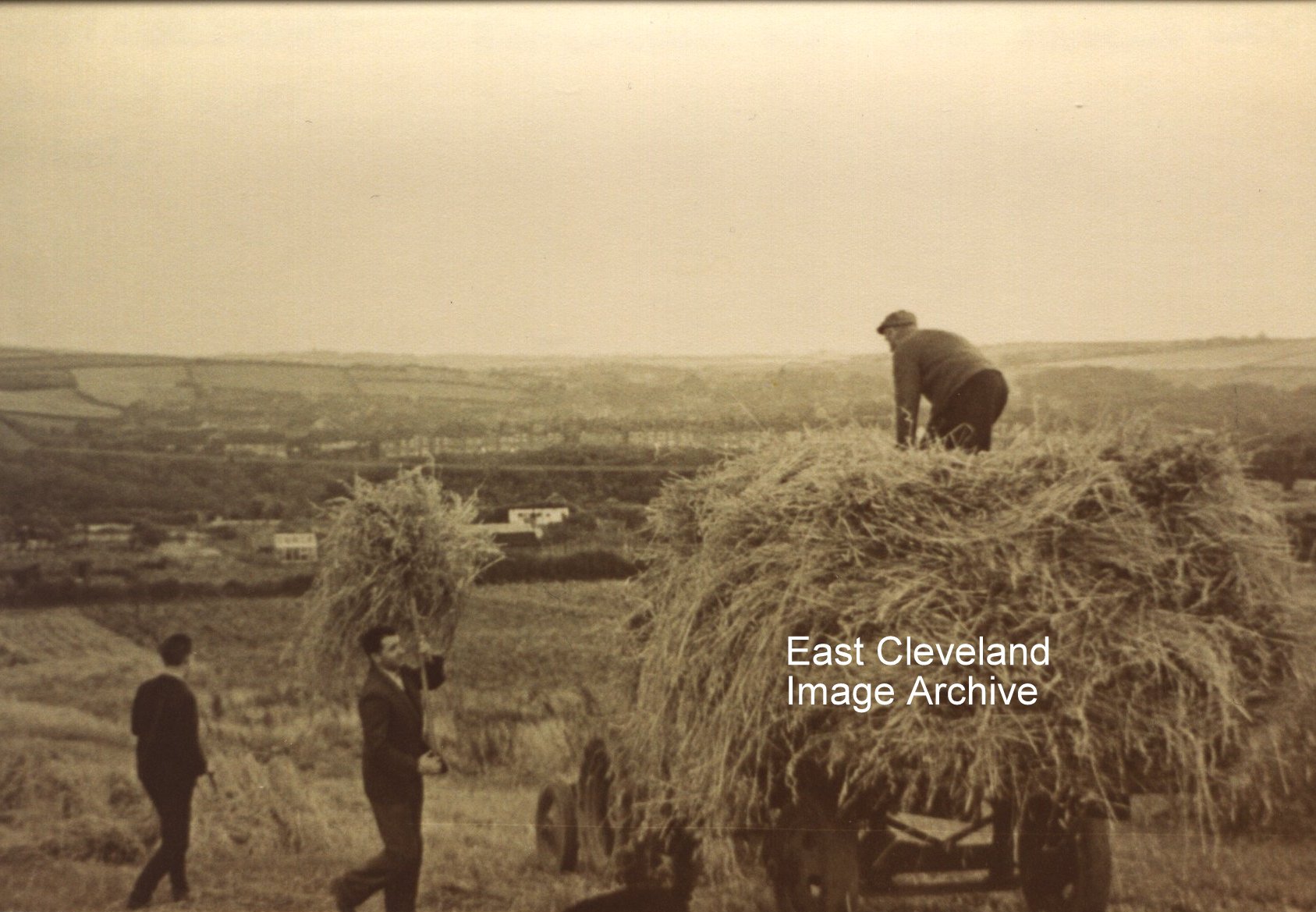
Harvesting in the old-fashioned way no combined harvesters here! Derick Pearson advises: “Jack Collinson standing on top of the hay and Stan Bowman one of the other men in the photograph, taken about 1958; taken in a field at the right hand side of Kilton Bank, overlooking lower Kilton Lane Gardens and in the distance is bank top and Cowscote in Loftus.” When loading this image the editor was unsure as to whether these were sheaves or forkfuls of hay; with closer inspection it appears that it is sheaves of corn being loaded, so our commentary and title have been amended.
Image courtesy of Kath Wardell from a collection compiled by Derick Pearson, thanks to Derick Pearson, G. Baxter and A. Etherington for the updates.
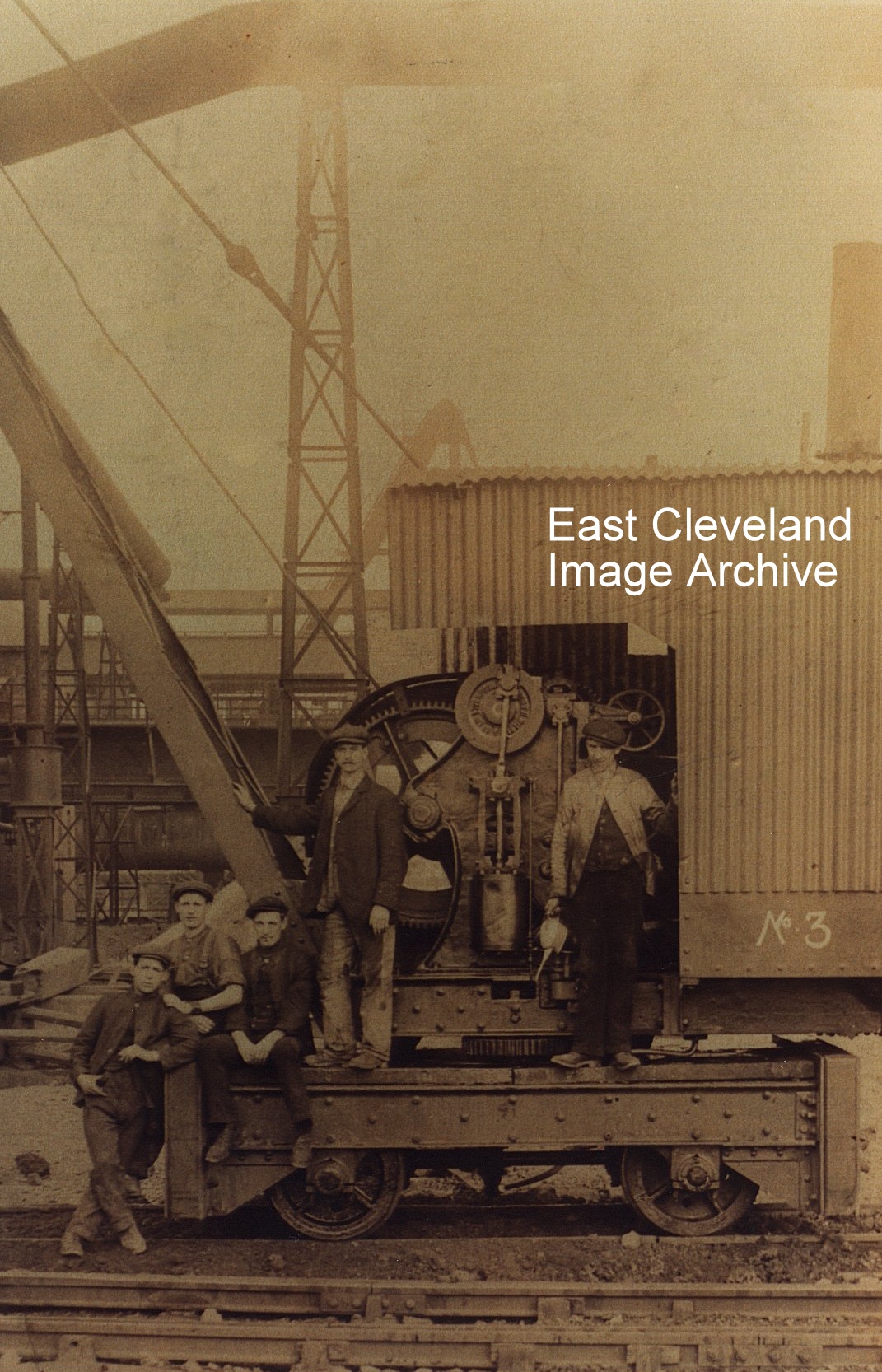
Once again the Archive asked ”Who were these men and what date was this photograph taken?” Terry Clarke t0ld us: ”I remember that crane it was called the Goliath.” George Brown told us: ”This photograph is in the book ‘Skinningrove Iron and Steel Works’ by Cliff Shepherd; it was no. 3 crane, constructed by J. H. Wilson and Co. of Liverpool. The smallest crane at Skinningrove at that time, the photograph was courtesy of the East Cleveland Image Archive”. Whilst Terry Robinson tells us: ”No. 3 three-ton steam crane. I remember as an apprentice fitter, being allowed to drive this crane from the fitting shop back to the old loco shed just before finishing time, as the regular driver Mr Ralph Walker (from East Loftus I think) knew I was interested in all things railway/steam. This was 1966/67; I finished my apprenticeship in 1969.”
Thanks to Terry Clarke, George Brown and Terry Robinson for the updates.
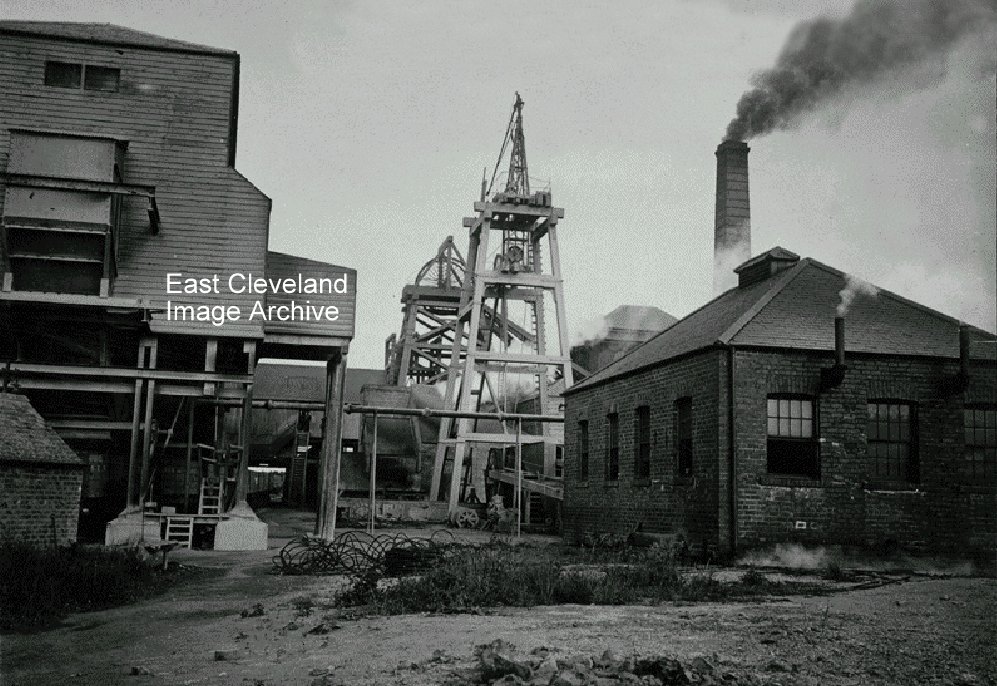
A lovely clear photograph of Kilton Pit in full production by the look of the emissions from the chimney.
Image courtesy of the Pem Holliday Collection.
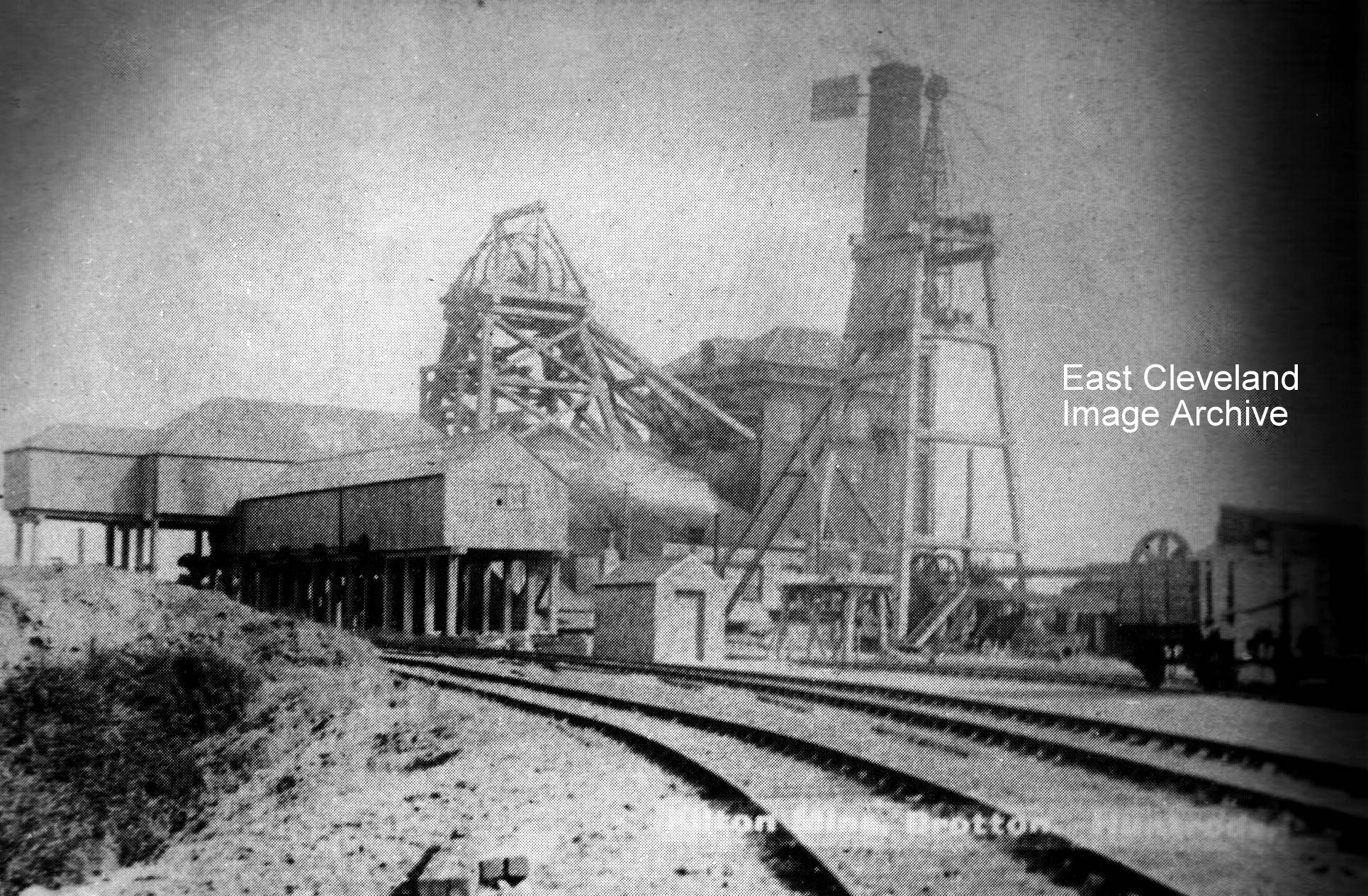
The write up under the Huntrodd’s postcard view of Kilton pit included information that it was 680 feet deep and also was querying the windmill in the background possibly being used to pump water from the mine. Derick Pearson advised: “The shaft with the windmill at the back of this photograph, was an air return shaft as well as a second rout out in the event of problems. The windmill may have been used at that time to drive an output fan to draw the stale air from the workings which would in turn draw clean air in from the other shaft.”
Image courtesy of the Pem Holliday Collection, thanks to Derick Pearson for the update.
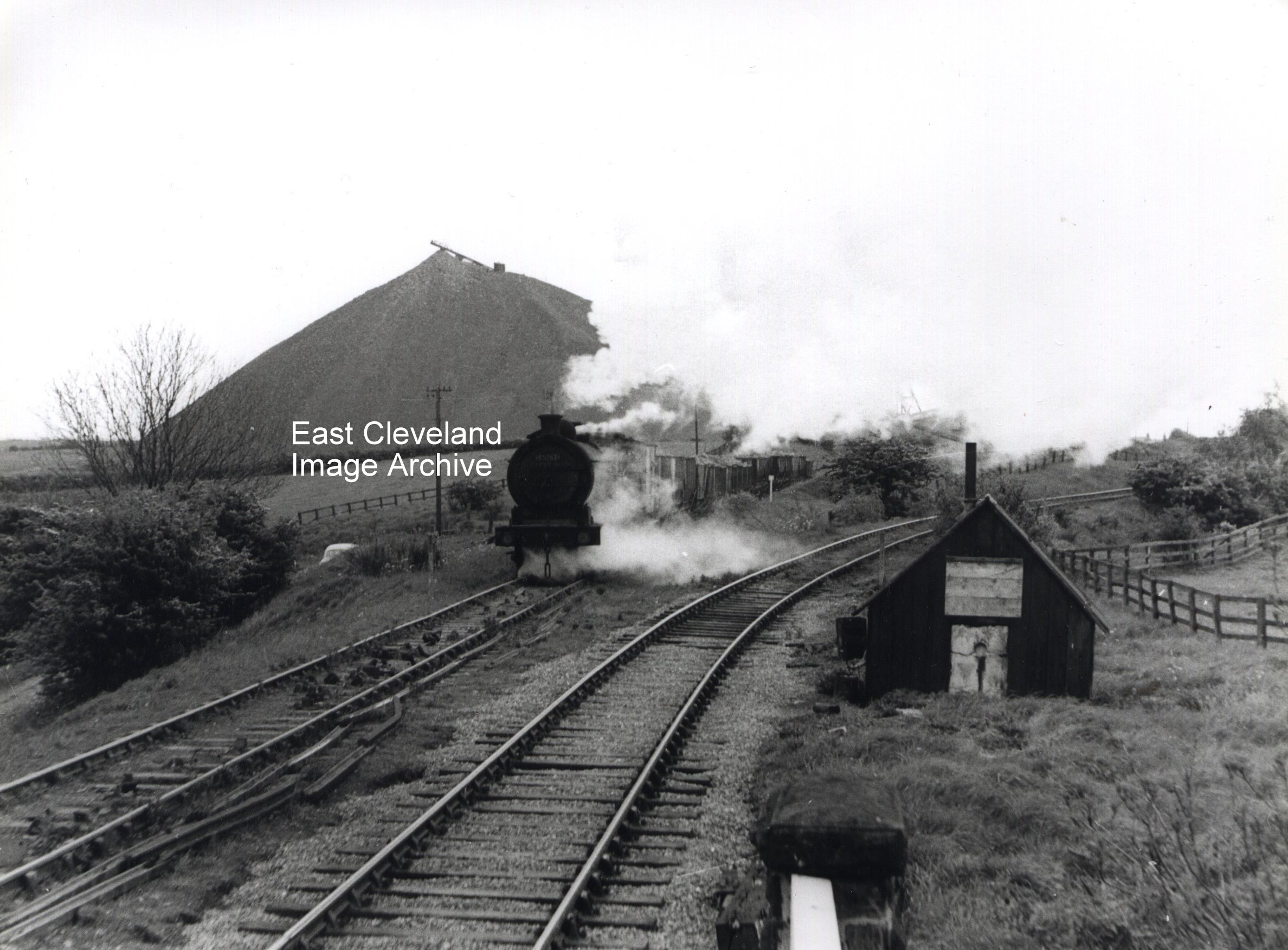
Taken about 1957 of a loaded train from Kilton Mine approaching Lingdale Junction; the Lingdale Mines branch is the one curving to the right and was extremely steep. Simon Chapman told us: “Look carefully at the train and you’ll see the brake van is behind the engine, not at the back of the train. This was allowed in later years because the gradient was down all the way to Brotton, where the engine ran round to reverse the train before taking it to Tees-side. In place of the brake van at the end of the train a lamp or red flag was hung on the back of the last wagon to show to signalmen at Kiltonthorpe Junction and Brotton that the train was complete i.e. a wagon hadn’t been derailed and lost on the way.” Also of interest is the shale spoil ‘hill’ on the left of the image; this is now one of the few remaining hills of excavated spoil from the ironstone mines of East Cleveland; South Skelton being another such reminder. Alan Featonby suggests: “It is possible this photograph was taken on 21st May, 1959. A similar photograph appears in ‘Stephen Chapman’s book Railway Memories No. 18 Cleveland and Whitby’ attributed to Ken Hoole. If so, the locomotive is Class J26 65762 of Thornaby shed. The car by the coal drops is the give away.”
Image courtesy of the Pem Holliday Collection and many thanks to Simon Chapman, Peter Appleton and Alan Featonby for the updates.
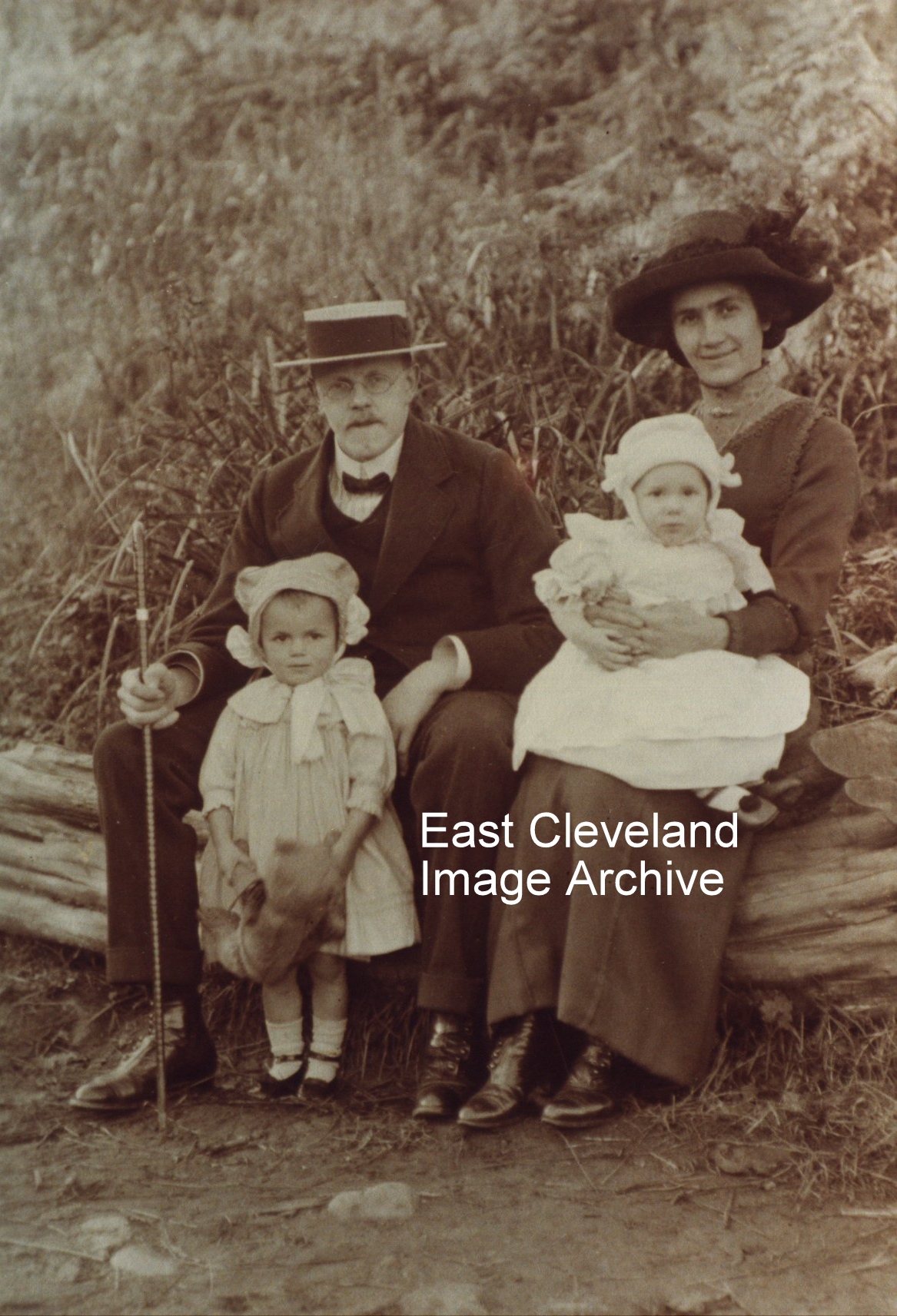
When the Archive first posted this image the question was: “Mr and Mrs George T. Goodwill and family, anyone know the people in the photograph or where it was taken?” Researches to date have proved the following: George Thomas Goodwill was born in 1883, in 1901 was living at 6 Dixon Street, Carlin How; he married Isabel Cowen in 1905 and in 1911 was living at 7 Bells Huts. However the census return shows that both their children had at that time died, so perhaps this image is incorrectly dated or happier times were afoot. The Archive will continue researching the family and post results.
Image from a collection compiled by Derick Pearson.
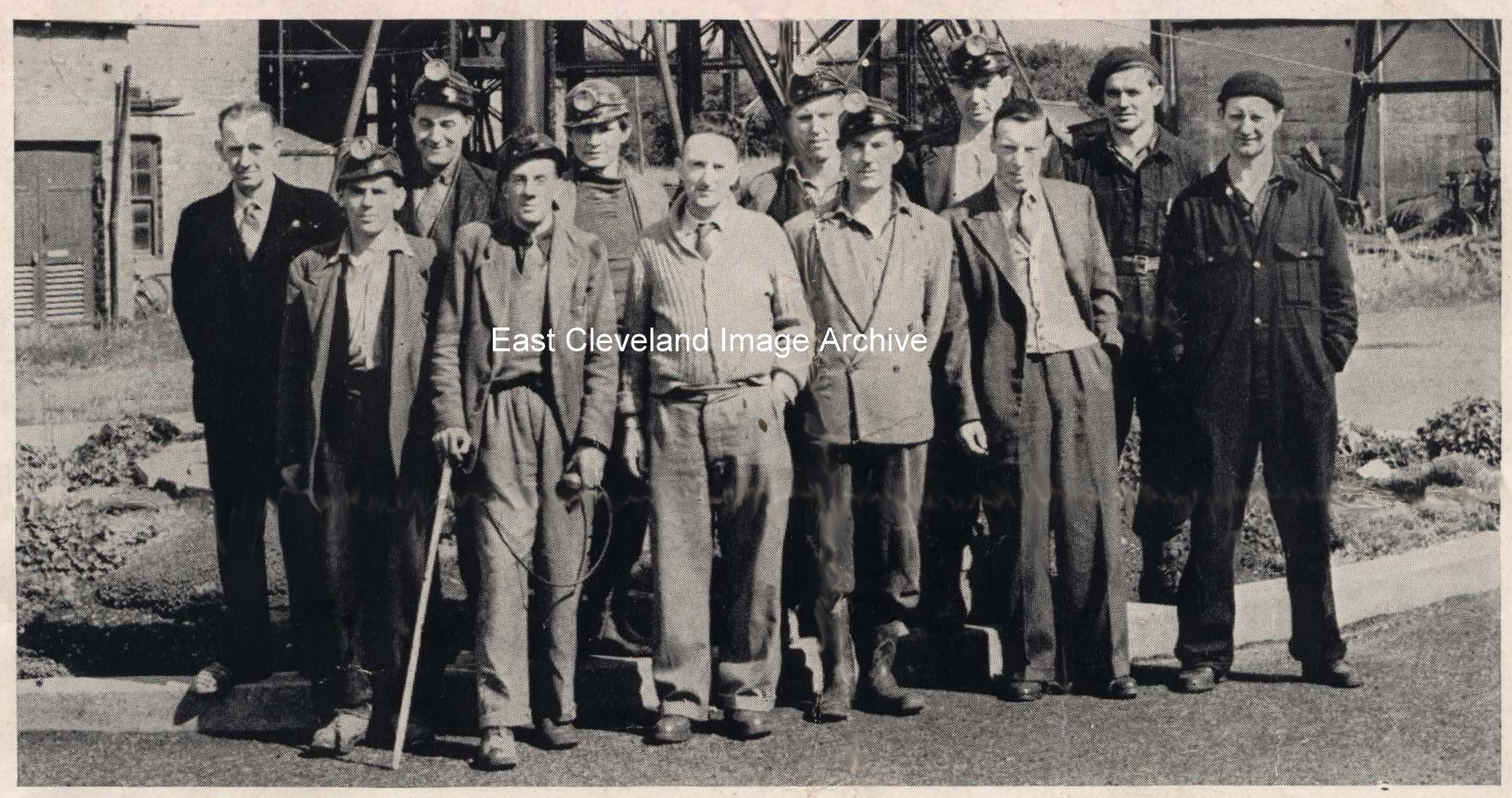
Pictured we have; back row (left to right): William Beadnall (joiner), Raymond Edwin Johnson (back overman), Ivan Zagrovic, Raymond Brown (loaderman), Edward Dove (loaderman), Wladislaw Wnek (fitter).
Front row: G. Woodall (haulage hand), John Robert Carter (senior overman), Andrew Turnbull (mine manager), Dennis Pearson (deputy mine manager), Edward Bendall (loaderman – buried under the rockfall), Frank Morris (head locomotive fitter). The team also received the Queen’s Commendation for Brave Conduct.
Derick Pearson advises: “My father is the deputy on here Dennis Pearson; each of these men got Laurel Leaf medals (which I still have) presented to them by Sir Anthony Eden. The article was published in the London Gazette on 3rd of July 1956 and each man got a certificate”. Ryan Zagrovic tell us: “My grandad was Ivan Zagrovic on there unfortunately I didn’t get to meet him”. Pam McVay adds: “W. Beadnall lived on Lorne Terrace, Brotton; he was our neighbour but until now did not know about this, people kept quiet about their achievements in those days!”.
Image from a collection compiled by Derick Pearson, thanks to Derick Pearson, Ryan Zagrovic and Pamela McVay for the updates. Also thanks to Chris Twigg for additional christian names, work positions and additional inforamtion.
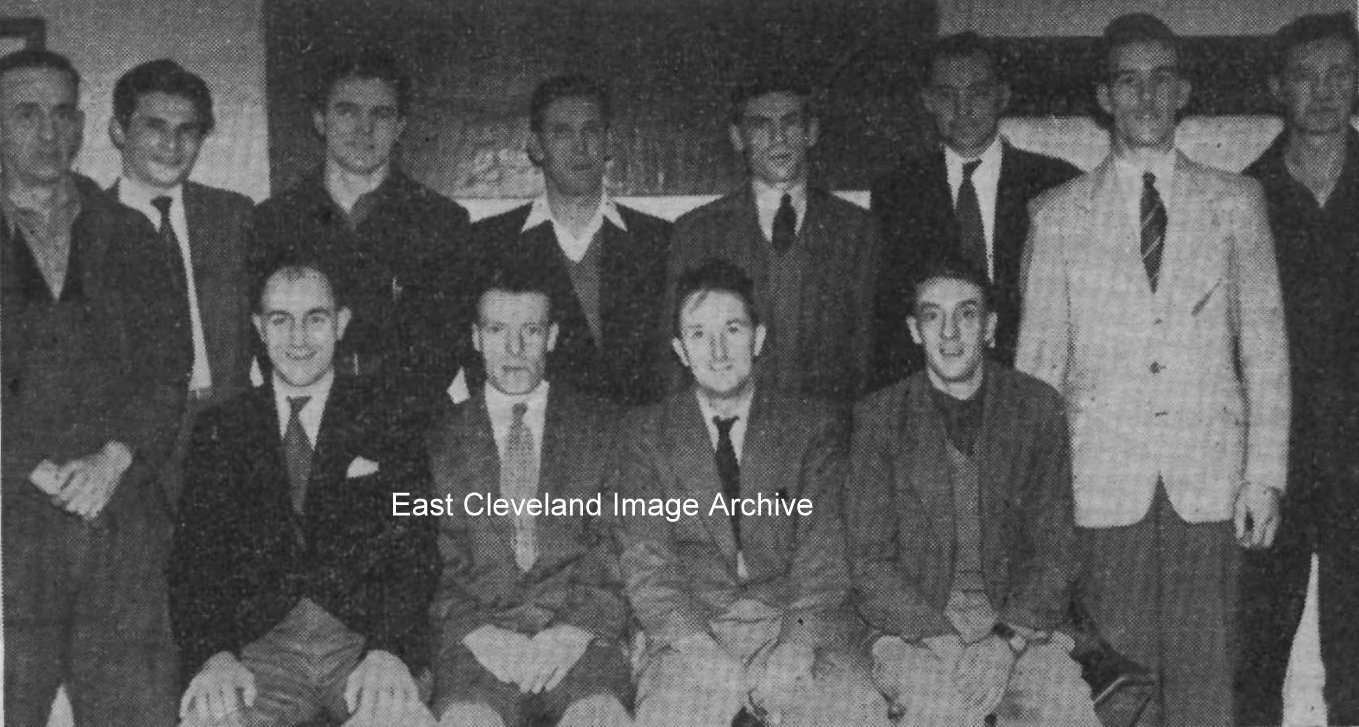
From a newspaper cutting, the men from Kilton Mine rescued Edward Bendall. Edward was trapped in a roof-fall at the mine January 13th 1956 and were awarded the Queen’s Commendation for Brave Conduct. Carole Zagrovic tells us: ”Second from left on the top row is my dad Ivica ‘Ivan’ Zagrovic – it was my Grandmother who went to London to collect the medals – in a little red box with white satin – two small silver pins of leaves”. Derick Pearson adds: “My father and the other members of the rescue team went to London to be presented with the medals by Sir Anthony Eden”.
Image from a collection compiled by Derick Pearson, thanks to Carole Zagrovic and Derick Pearson for the updates.
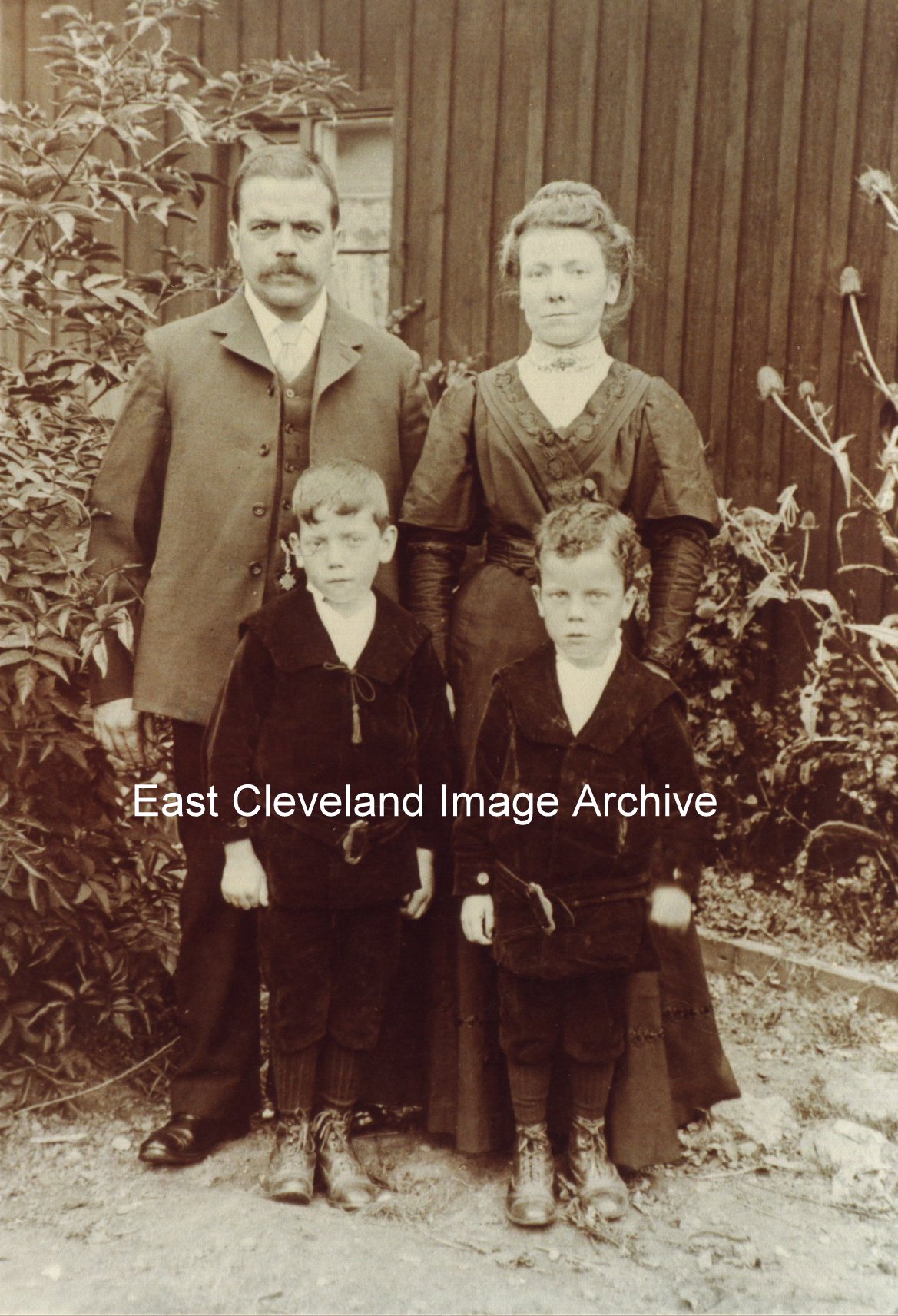
Early 1900’s when this photograph was taken; John and Alf Nicholson with their parents outside no. 6 ’Bells Huts’, Mill Lane, Carlin How; possibly c.1905, as in the 1911 Census John and Alfred were nine years and seven years of age. These were dwellings erected after the mine was opened by Bell Brothers in 1873 to house miners (brought in to ease the scarcity of ironstone miners) near the allotment gardens; the Peel & Jones foundry stood on the site of these huts. When first built one main tap outside in the middle of each row provided the water for the residents. Others were erected in the field below Carlin How (Duck Hole) Mine and some were being used in the early 1950s.The image has attracted considerable comments; Derick Pearson who lived there from 1945 to 1950 has memories of: “Collecting water from a spring near ‘Speddings house’ (Sykes farm House)”. Alan Pearson tells us: ” The 1881 census for Kilton lists 1 to 18 Wood Houses along with 1 to 9 Carlin How, Steavenson Street, Dixon Street and Sykes Farm. This is repeated in the 1891 census before appearing as 1 to 18 Bells Huts in 1901″. Bill Kitching tells us: “Bells huts families I remember: Winspeare, Welham, Agar, Gell, Leng, Crossman, Lancaster and Wylie”. We are told by Lynn O’Neill: “My great-uncle and Aunt lived at No 1 Bells Huts. They were Dave and Sarah Wylie”. Trevor Metcalfe told us: “My grandparents (Joseph and Clara Metcalfe) lived at number 13 Bells Huts”. Dave Fell told us: “I moved from there in 1950 but used to go back up there for some years after that to visit people. Sarah Wylie was last house to be demolished and that was c.1960”. Keith Hudson told us: “My nana was a Welburn and my grandad was a Hudson. I guess that’s where they met”. And Margaret Martin tells us: ”My dad (Eric Agar) lived in Bell’s Huts from about 1933 to 1941. There were 3 rows and he lived in Row 1 and had the water pump immediately outside his house. He lived there with his mother (Margaret Agar), father( Owen Agar) and sister (Iris Agar). Owen (my grandad) worked in Duck Hole Pit.
Image from a collection compiled by Derick Pearson; thanks to Derick Pearson, Alan Pearson, Bill Kitching, Lynn O’Neill, Trevor Metcalfe, Dave Fell, Keith Hudson, Margaret Martin and Jan Dunning for the comments and updates.
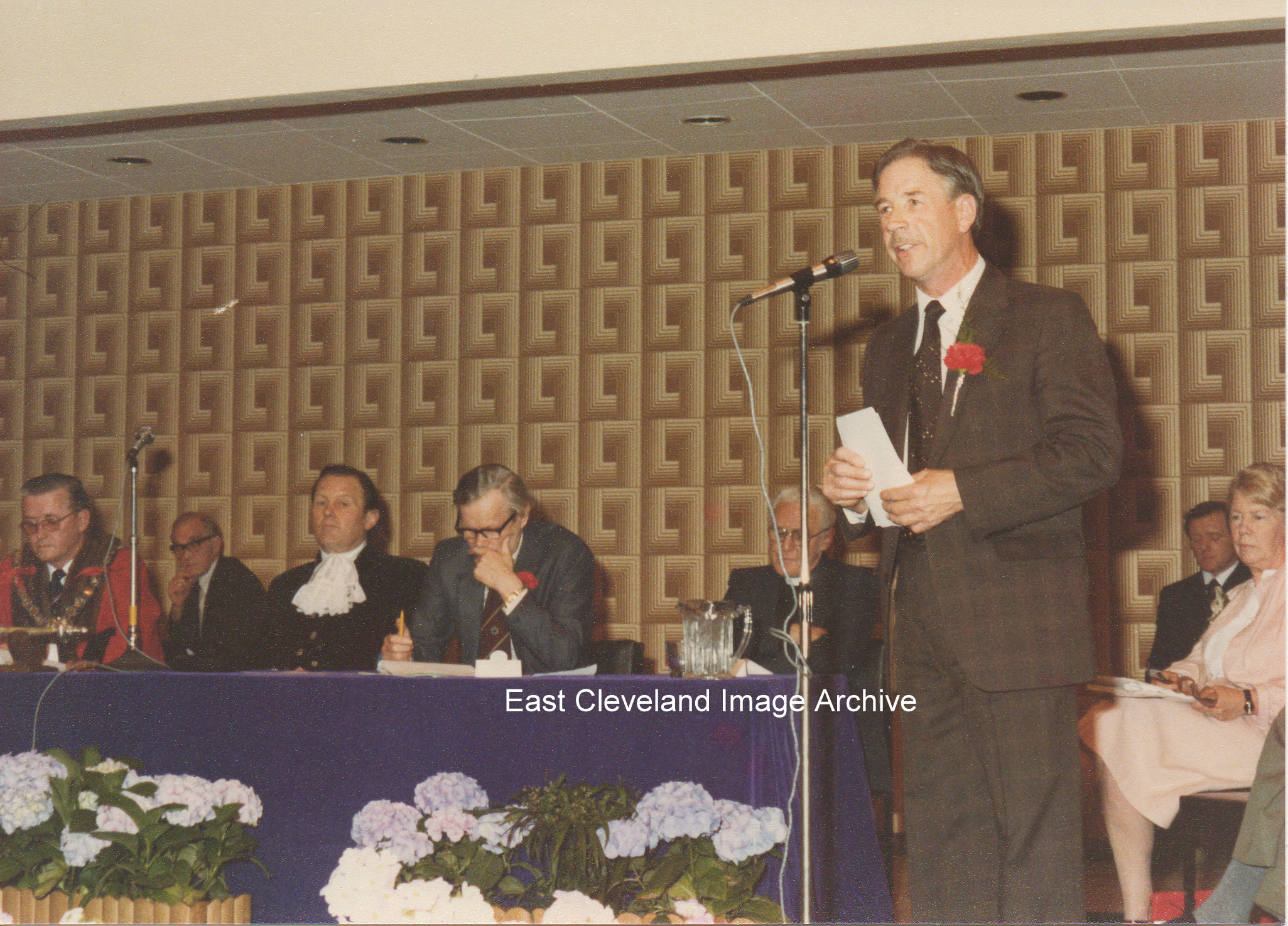
The mayoral induction at Eston Town Hall, Ray Tough advised: “Councillor Garth Houchan was talking on the stage in this photograph. The mayor at the time was Terry Collins and you can see the Council leader Arthur Seed sat next to the High Sheriff”.
Image courtesy of Loftus Town Council, thanks to Ray Tough for the update.
Page 7 of 27« First«...56789...20...»Last »
|
|










Recent Comments